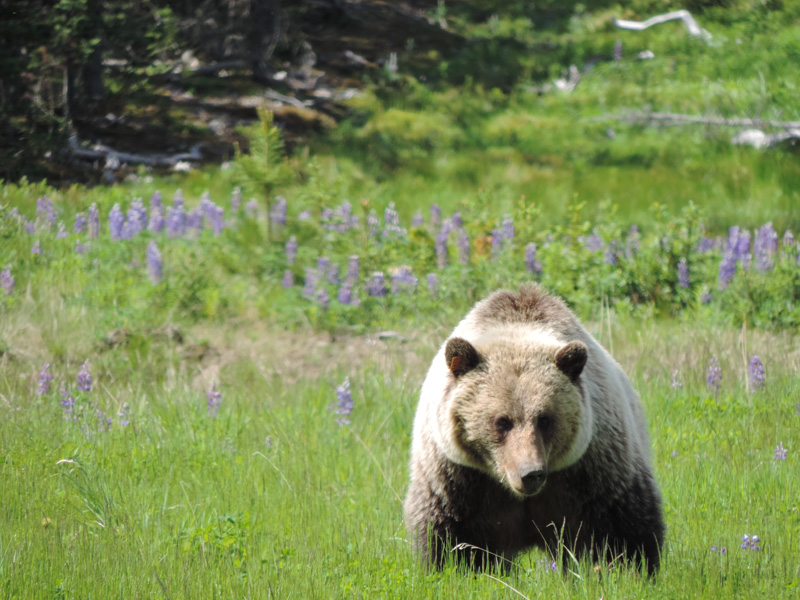Abstract
Metrics used to quantify the condition or physiological states of individuals provide proactive mechanisms for understanding population dynamics in the context of environmental factors. Our study examined how anthropogenic disturbance, habitat characteristics and hair cortisol concentrations interpreted as a sex-specific indicator of potential habitat net-energy demand affect the body condition of grizzly bears (n = 163) in a threatened population in Alberta, Canada. We quantified environmental variables by modelling spatial patterns of individual habitat use based on global positioning system telemetry data. After controlling for gender, age and capture effects, we assessed the influence of biological and environmental variables on body condition using linear mixed-effects models in an information theoretical approach. Our strongest model suggested that body condition was improved when patterns of habitat use included greater vegetation productivity, increased influence of forest harvest blocks and oil and gas well sites, and a higher percentage of regenerating and coniferous forest. However, body condition was negatively affected by habitat use in close proximity to roads and in areas where potential energetic demands were high. Poor body condition was also associated with increased selection of parks and protected areas and greater seasonal vegetation productivity. Adult females, females with cubs-of-year, juvenile females and juvenile males were in poorer body condition compared with adult males, suggesting that intra-specific competition and differences in habitat use based on gender and age may influence body condition dynamics. Habitat net-energy demand also tended to be higher in areas used by females which, combined with observed trends in body condition, could affect reproductive success in this threatened population. Our results highlight the importance of considering spatiotemporal variability in environmental factors and habitat use when assessing the body condition of individuals. Long-term and large-scale monitoring of the physiological state of individuals provides a more comprehensive approach to support management and conservation of species at risk.
Citation
Bourbonnais, M. L., Nelson, T. A., Cattet, M. R. L., Darimont, C. T., Stenhouse, G. B., & Janz, D. M. (2014). Environmental factors and habitat use influence body condition of individuals in a species at risk, the grizzly bear. Conservation Physiology, 2(1), cou043. doi:10.1093/conphys/cou043








